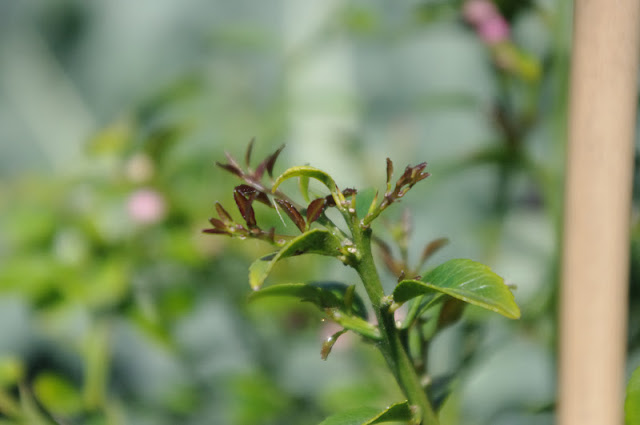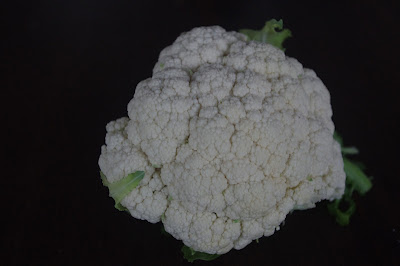It's spring in the patch and here is what is happening.
Baby vegetables
Dipped in hummus don't you think?
Fruit on the way
The first of the tomatoes has set - this is a cherry. (Oh dear, it's a bit blurry!)
And Collette the finger lime is flowering like crazy and starting to set their tiny fruit. It will turn black soon and hopefully start to thicken. The fruit that set in March either fell off or was stolen by a curious currawong?
Flowers
I grow a lot of flowers in my vegetable patch, I just like a little bit of colour and they do bring the bees. Right now the violas are spectacular.
And my self sown poppies are just starting to flower. I collected seed for these poppies many years ago now when I came a cross a deserted house with a wild garden in Tarcutta (or was it Holbrook?).We were on our way down to the Wangarratta Jazz Festival and stopped off for a rest and a coffee. The round dried heads of poppies were just beautiful and so I collected some. I didn't know what they would produce, but I love the colour of these blooms and the grey green of their foliage.
When they have dried off I collect some dried heads to take inside as a dried display and sprinkle the seeds where I want them to come up next year. They just keep coming up every year, where ever they want to regardless of my attempt to place them in certain locations. I try to make space for them each time as they are great bee magnets. The bees circle around and around inside the cup of the petals, it's funny to watch.
And my thyme is flowering, also bringing bees. They are such a delicate mauve. This bunch came inside and went into last night's meal.
The last of the snow peas
This is the third and last planting of my snow peas. There is plenty of really good fruit to come and plenty of flowers. But they will soon be finished and I will have to wait for the cooler season for them again. Heaven on a stalk.
Pests
You smell them before you see them and then when you see them you despair. Stink bugs.
I HAVE to do something about these blighters today otherwise there will be no limes. You can see them sucking the stems behind the newly set fruit. They will be come the subject of an entire post.
And the lovely snail.
This poor lettuce was ravaged overnight! Turn your back and they slime out of their hiding spots and munch.
New life
It only took one warm day and the frogs got going!
Baby vegetables
I have just started to pick my first baby radishes of the season. I deliberately pick them small as this is the first thinning I do. I sow thickly and only thin when the first small round roots have formed. Then there is more room for the others.
Dipped in hummus don't you think?
Fruit on the way
The first of the tomatoes has set - this is a cherry. (Oh dear, it's a bit blurry!)
And Collette the finger lime is flowering like crazy and starting to set their tiny fruit. It will turn black soon and hopefully start to thicken. The fruit that set in March either fell off or was stolen by a curious currawong?
Flowers
I grow a lot of flowers in my vegetable patch, I just like a little bit of colour and they do bring the bees. Right now the violas are spectacular.
And my self sown poppies are just starting to flower. I collected seed for these poppies many years ago now when I came a cross a deserted house with a wild garden in Tarcutta (or was it Holbrook?).We were on our way down to the Wangarratta Jazz Festival and stopped off for a rest and a coffee. The round dried heads of poppies were just beautiful and so I collected some. I didn't know what they would produce, but I love the colour of these blooms and the grey green of their foliage.
When they have dried off I collect some dried heads to take inside as a dried display and sprinkle the seeds where I want them to come up next year. They just keep coming up every year, where ever they want to regardless of my attempt to place them in certain locations. I try to make space for them each time as they are great bee magnets. The bees circle around and around inside the cup of the petals, it's funny to watch.
And my thyme is flowering, also bringing bees. They are such a delicate mauve. This bunch came inside and went into last night's meal.
The last of the snow peas
This is the third and last planting of my snow peas. There is plenty of really good fruit to come and plenty of flowers. But they will soon be finished and I will have to wait for the cooler season for them again. Heaven on a stalk.
Pests
You smell them before you see them and then when you see them you despair. Stink bugs.
I HAVE to do something about these blighters today otherwise there will be no limes. You can see them sucking the stems behind the newly set fruit. They will be come the subject of an entire post.
And the lovely snail.
This poor lettuce was ravaged overnight! Turn your back and they slime out of their hiding spots and munch.
New life
It only took one warm day and the frogs got going!

















































